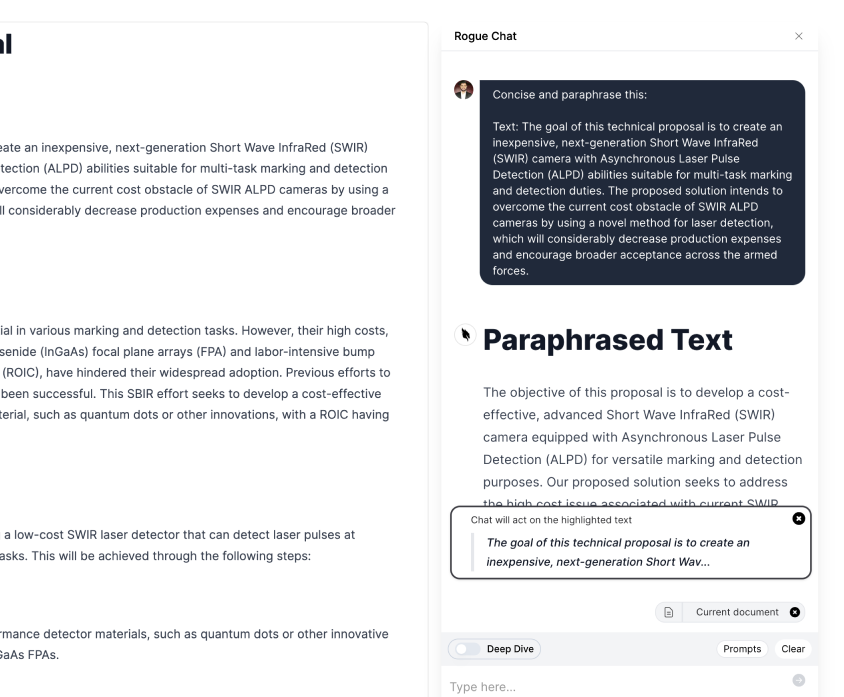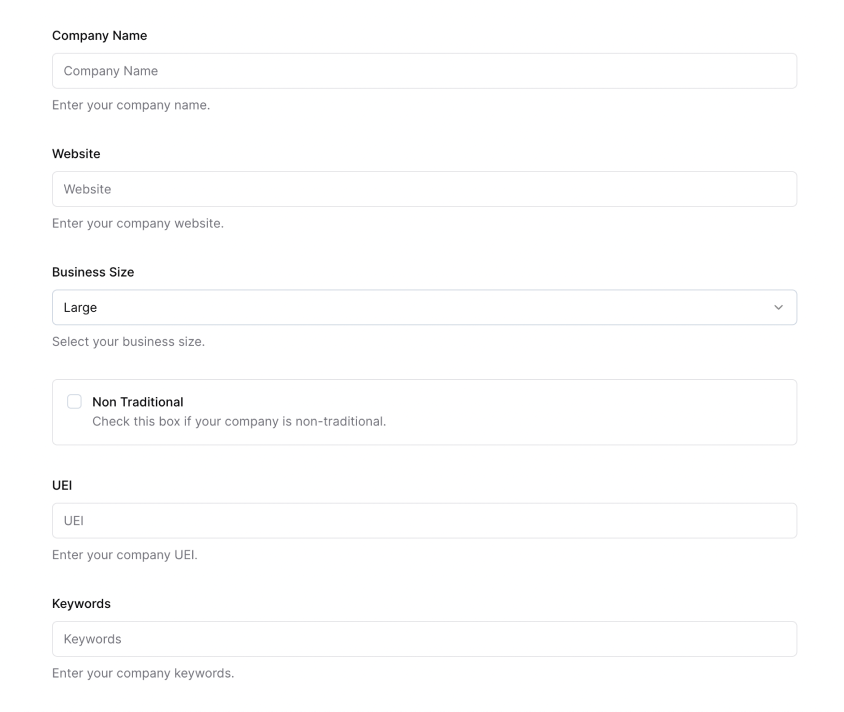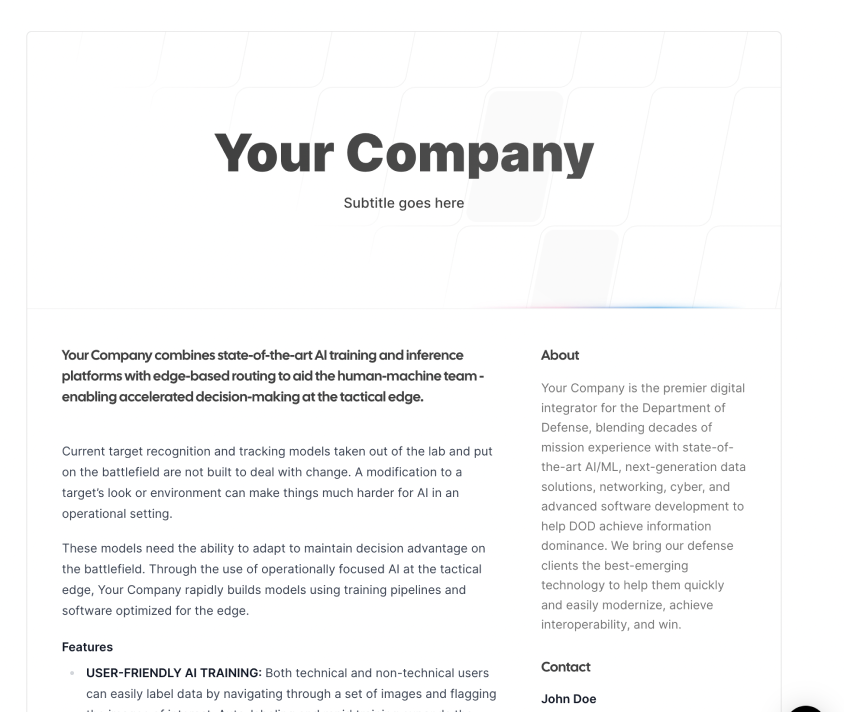
6.0 Building Runway
Jumping the valley takes time, and money, let's look for some of the latter so you can buy the former.
Building Runway
or "no plan survives first contact"
or "don't fall in love with your plan"
or "win by all means necessary"
How do you get over the valley of death?
Well you don't do it by dying on the journey, and by dying I mean running out of money to pay payroll.
This happens more often than you might think, you just don't hear about it. No one walks around bragging about how they quietly shut down their contracting company because they couldn't get a solid customer.
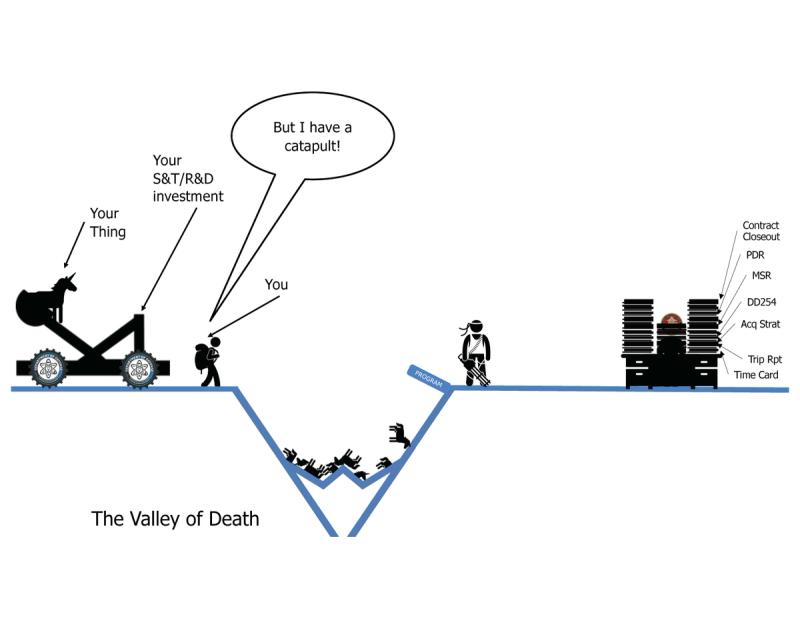
Don't get me wrong, landing a SBIR, OTA, or other research funding is awesome, it is runway you need.
It often offers exposure to potential customers.
It often offers exposure to potential end users.

But if you think a SBIR Phase 1 is going to smoothly roll into a Phase 2 with the same customer, and then they'll love it so much they'll give you a P3...you're dreaming. Don't be too married. to your plan.
But if you think your Phase 1 or Phase 2 SBIR is going to propel you over the valley of death, you are almost certainly wrong.
Why is this though? Why does the government seemingly spread bets around like a squirrel in a casino and then not come back to the table to collect the winnings?
Answer: incentives and objectives.
Half or more of the research dollars spent by DoD are not intended to make a winning bet.
They could be looking for new concepts
They could be creating new foundations for future development
They could be "buying down risk" for someone else to follow behind and pick up the technology
DARPA has something like 7 definitions of "technology transition" and only one of them is to a DoD program of record.
"Then how do I do it???" you ask.
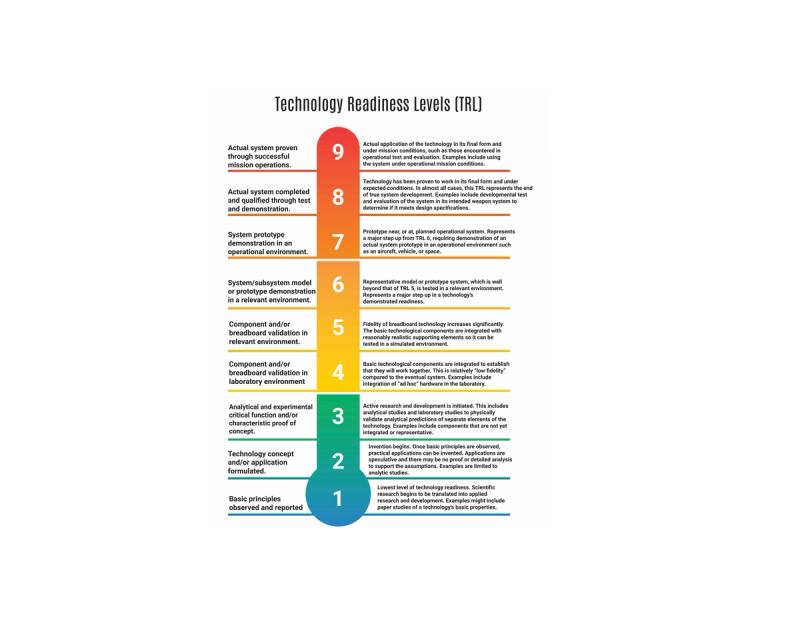
Lets take a step back for a minute and talk about Technology Readiness Levels. This age old metric, originally crafted by NASA is a measuring stick against which your technology will often be judged.
If it's a twinkle in your eye - or a concept on a Phase 1 SBIR white paper - odds are you're at a TRL1.
If you have a fully developed and integrated system that is operational on a mission capable platform, you're more likely a 9.

Why does this matter?
Because there's different colors of research and development money.
Wait, there's colors of colors of money?
Yes, and they're specified for particular purposes.
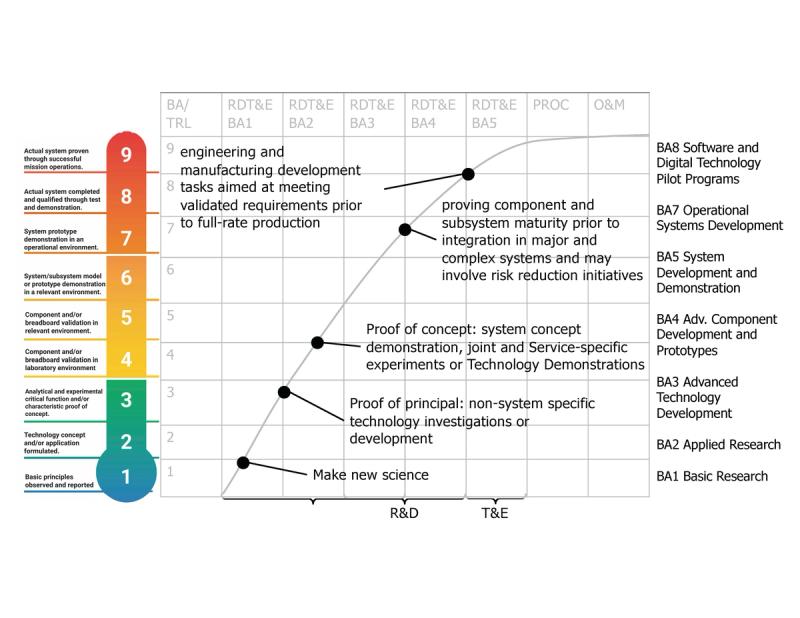
Your eye twinkle idea should be in the Budget Activity 1 or 2 range of basic or applied research.
If you're thing is a breadboard up to a prototype, it should probably be paid with BA 3.
BA4 is an important one, BA4 money is supposed to take your functional prototype and take it up to an operational prototype.
At the BA5 point you're making that prototype suited for a particular user/mission/system/platform so it can be used, or more importantly BOUGHT.
Why does this all matter?
Not least because that all colors of RDT&E come in the same quantity.
By the numbers, a smart person might want to go after the biggest pots in BA3-5.
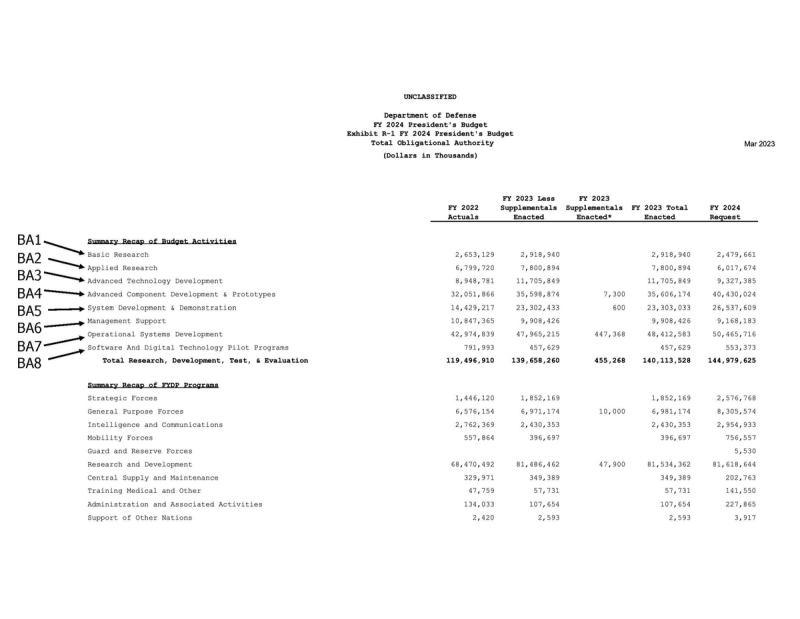
But how?
Well, different people can spend different money.
For instance, DARPA doesn't even get BA4 money, they are all in the 1-3 realm. The same goes mostly for the labs, like Army Research Lab and Navy Research Labs.
Air Force Research Lab is a little different, they get a range of different money, but different shops, like materials and lasers probably get more 1-3 money than 4-5.
SOCOM and DIU don't really do much of any 1-3 work, but a lot more 4-5. So different organizations are interested in technology at different TRLs.
If you talk to these folks they'll straight up tell you what TRL they want.
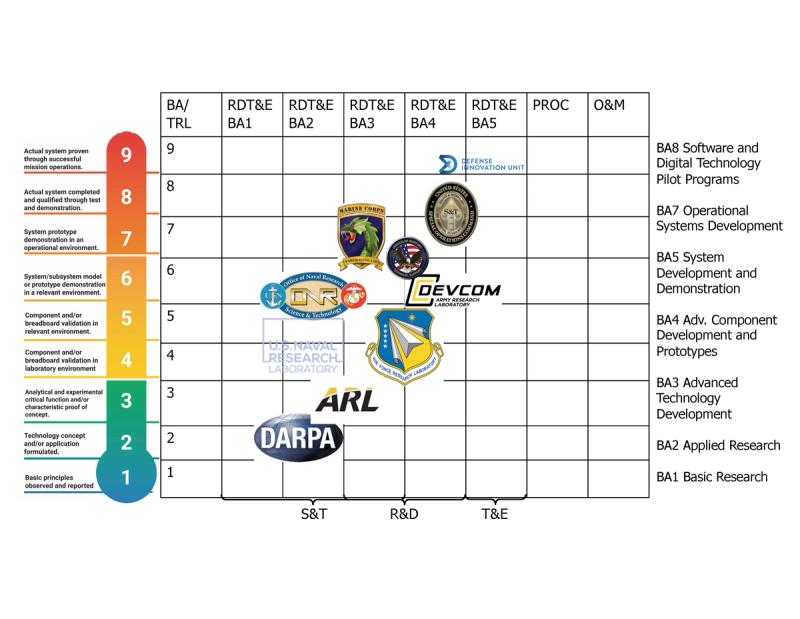
Let's add a wrinkle: funded or fee for service research.
Many of the DoD labs are fee for service, meaning that they receive their funding from the Program Offices.
Wait, what, they're on the other side of the valley.
Think about this, Program Managers need a new thing for a new mission or a new threat, let's say hypersonic missiles.
They have a program, their program has RDT&E funding, because that's how funding is flowed from the Treasury.
So when a PM needs some research done, they throw a MIPR over the fence to the research houses.
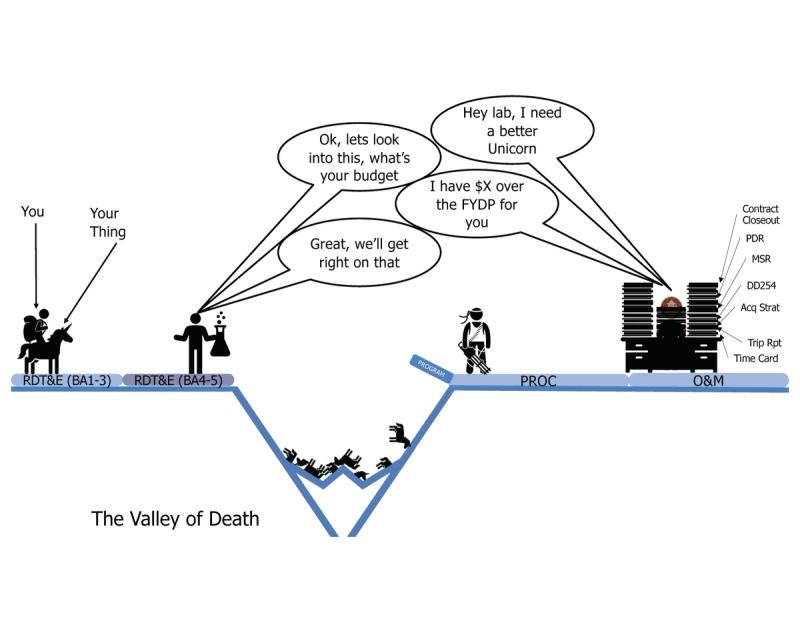
What do the research houses do?
They do some internal research, but they also a fund a lot through vendors, like yourselves.
How? Broad Agency Announcements mostly.
They post broad solicitations that stay open for a year or more at a time with categories of things they want to research.
You in turn propose to do said research.
Why is this good, because you're generally working in a development stream that is (at least tangentially) aligned with a program.
Now, are we advocating that you go out, pull a BAA, find a topic that's related to your tech and start lobbing proposals like it's going out of style?
NO!
Go talk to the white coats in the labs and find out what they want. Just like you talk to the end user who is all jazzed about your tech, talk to the labs, rapid tech insertion, rapid prototyping organizations.
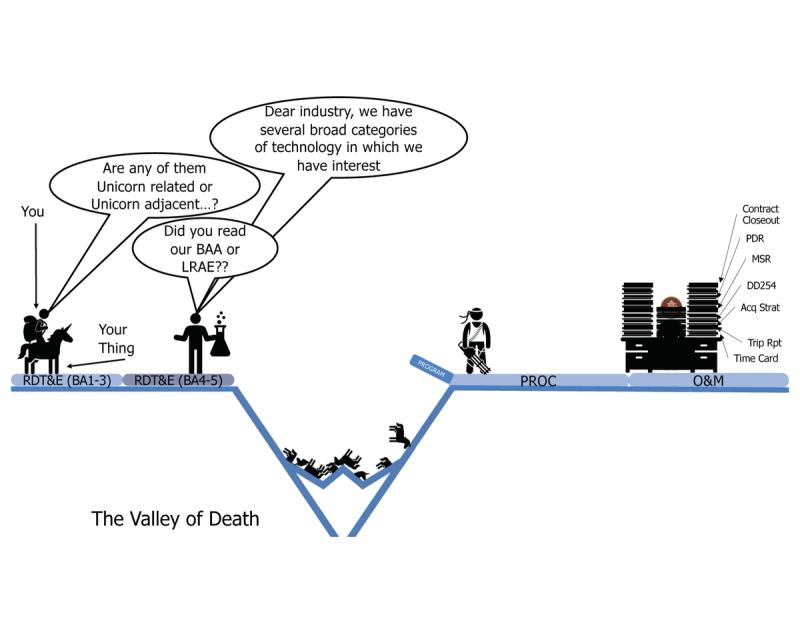
The number of organizations that have money and an onus for "innovation" and more importantly investment is growing.
This new DoD site has a good list of them: https://www.ctoinnovation.mil/innovation-organizations
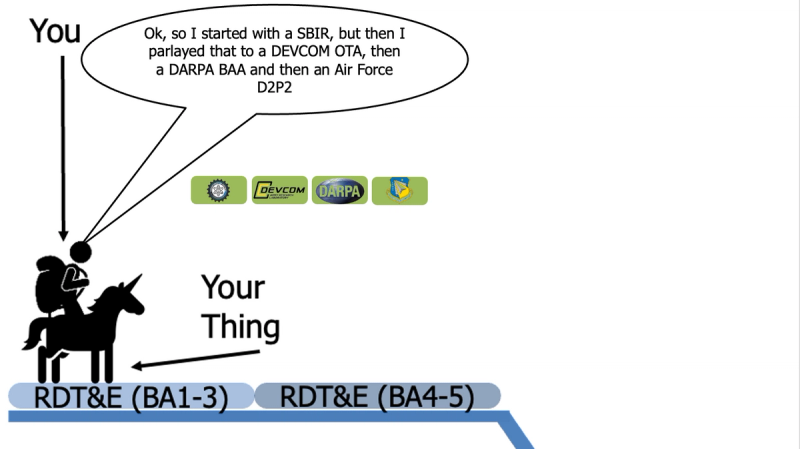
So what are saying? Start with a SBIR or whatever gave you a toe hold, and then broaden your scope and look for other sources of funds, there are many.
Just because you started with a SBIR with one organization, don't hesitate to seek sources of funds in other organizations.
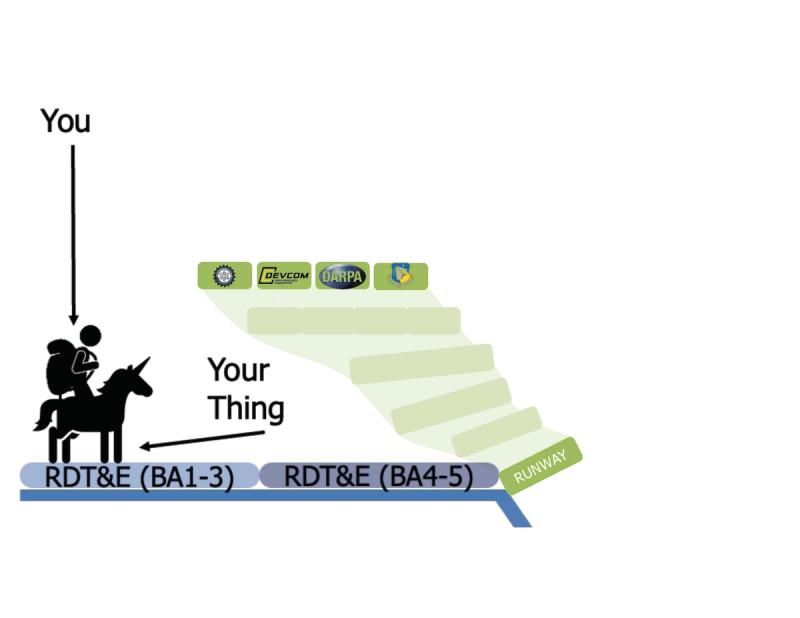
You can chain together sources of funds from multiple organizations to give yourself enough runway to get across the valley.
This also has the benefit of exposing you to more users, more customers, more use cases, more opportunities.
Government investors actually like for their companies to seek and secure investment elsewhere, everyone who puts resources into a technology gets to take credit for it's eventual success, so you are doing the government's work for them.

Why do you need to work on building runway?
Because you are likely to be on the left side of the valley for 2-5 years, at a minimum. Why?
It's called the POM...
Sign up for Rogue today!
Get started with Rogue and experience the best proposal writing tool in the industry.

